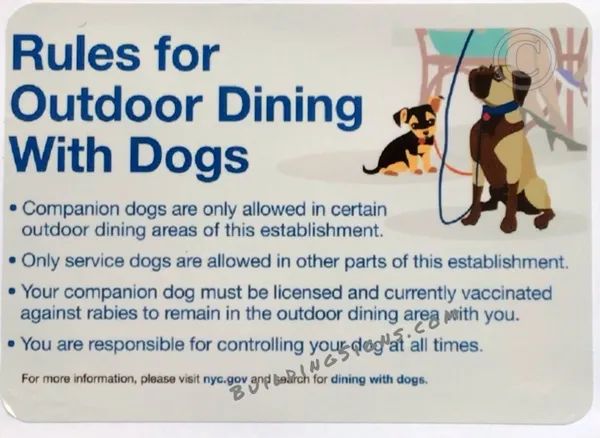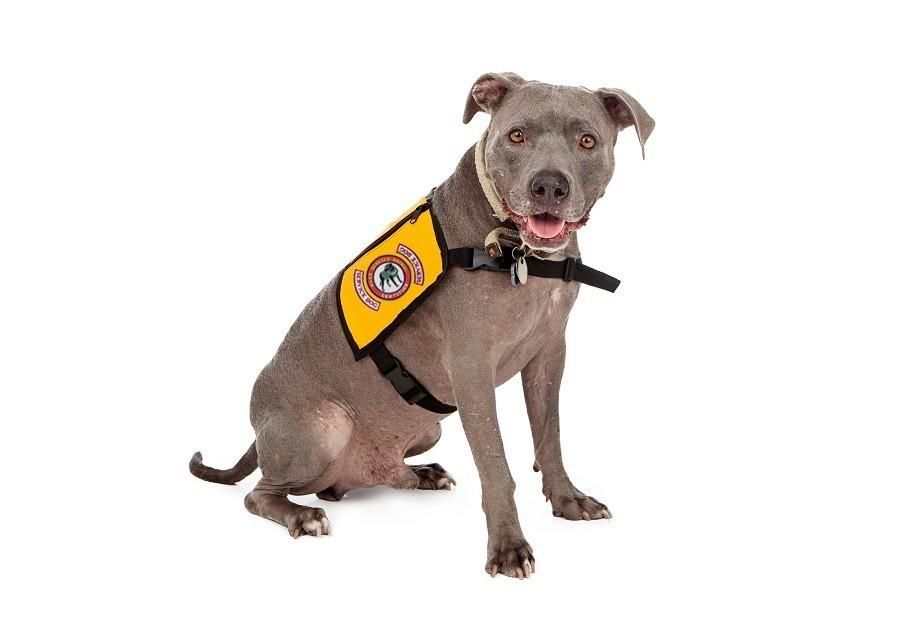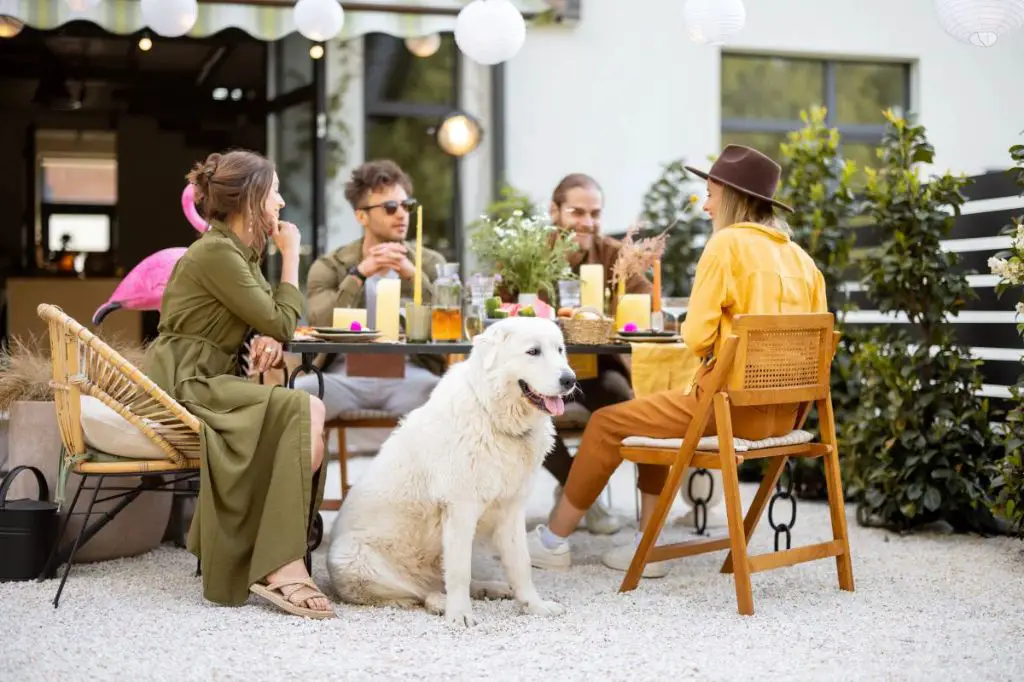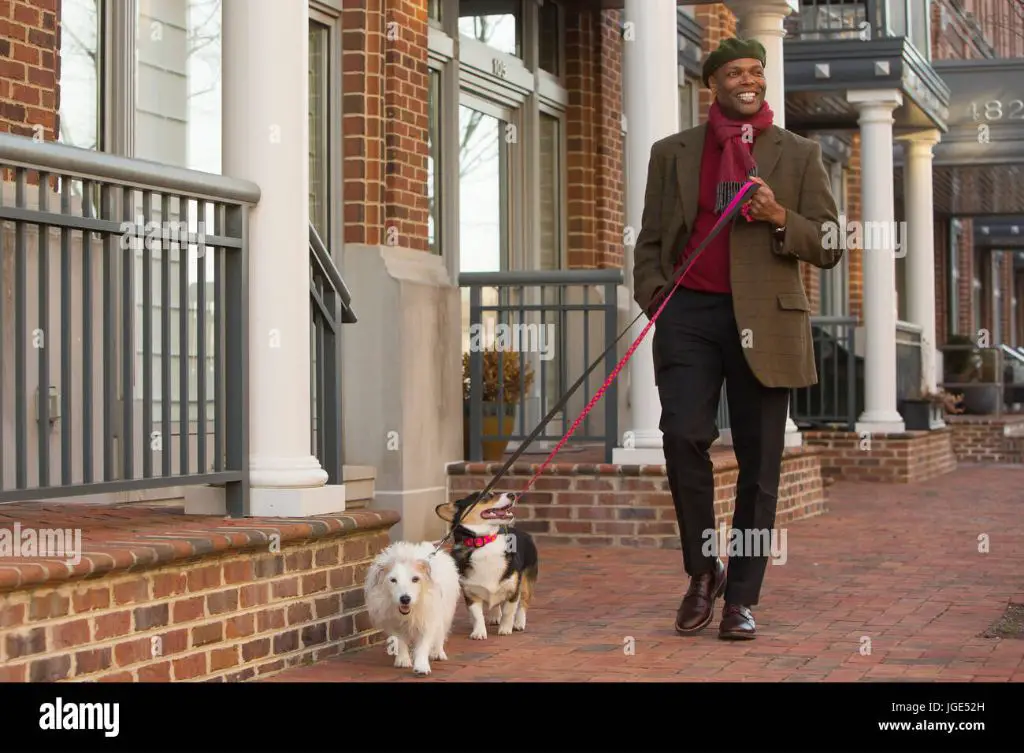Introduction
Dogs have become an integral part of many families across the United States. As a result, some dog owners want the option to bring their pets with them to restaurants. However, health and safety regulations limit where dogs are allowed within restaurants. Laws regarding dogs in restaurants vary by state and city across the country.
In general, the U.S. Food and Drug Administration Food Code prohibits live animals in areas where food is prepared, stored, or served. Exceptions are made for service animals that assist people with disabilities. Beyond this federal guidance, local jurisdictions can set their own rules. Some states have laws specifying where dogs are permitted in restaurants, while others leave it up to individual businesses or local authorities.
This article provides an overview of the laws and regulations regarding dogs in U.S. restaurants. It examines where dogs are allowed, prohibited, or conditionally permitted based on different state and local ordinances. We’ll also look at the reasons behind the restrictions, as well as the growing number of dog-friendly restaurants across the country.
Health Code Regulations
Laws regarding dogs in restaurants vary significantly by state and local jurisdiction. While the U.S. Food and Drug Administration (FDA) provides a Food Code that serves as a model for most state and local governments, the decision to adopt the FDA’s recommendations into law is up to each state.
For example, the FDA Food Code prohibits dogs in outdoor dining areas, except for service dogs. However, some states like California have not adopted this prohibition, instead leaving it up to local counties and cities to regulate dogs at restaurants. So in Los Angeles, well-behaved leashed dogs are allowed in outdoor dining areas, while San Diego prohibits all non-service dogs.

About half of U.S. states have adopted the FDA’s prohibition of dogs in outdoor dining areas into law. States like Texas, Florida, and New York ban dogs from any indoor or outdoor dining area, with exceptions for service dogs. On the other hand, states like Oregon, Colorado, and Virginia allow local jurisdictions to set their own laws regarding dogs at restaurants.
Ultimately, since health code laws can vary even within a state, pet owners need to research the specific county and city laws before bringing their dogs to dine at restaurants.
Service Dogs
The Americans with Disabilities Act (ADA) has specific protections for service dogs in restaurants. Under the ADA, service dogs are defined as dogs that are individually trained to do work or perform tasks for people with disabilities. Examples of such work or tasks include guiding people who are blind, alerting people who are deaf, pulling a wheelchair, alerting and protecting a person who is having a seizure, reminding a person with mental illness to take prescribed medications, calming a person with Post Traumatic Stress Disorder (PTSD) during an anxiety attack, or performing other duties. Service animals are working animals, not pets.
Businesses covered by the ADA, including restaurants and other food establishments, are required to allow service animals to accompany their handlers into all areas that the general public normally has access to. They cannot refuse access to service dogs or charge extra fees that they don’t charge other customers. Service dogs are allowed in areas including dining areas and even food preparation areas.
According to the ADA’s regulations, service dogs do not need to wear a vest, ID tag, or specific harness to identify them as service animals. Businesses also cannot ask about the person’s disability, require medical documentation, require a special identification card or training documentation for the dog, or ask that the dog demonstrate its ability to perform the work or task.

Sources:
https://archive.ada.gov/archive/qasrvc.htm
https://www.ada.gov/topics/service-animals/
Outdoor Seating
Many states and cities have passed laws allowing dogs in outdoor seating areas of restaurants, as long as the restaurant permits it. For example, New York City recently passed a “Dining with Dogs” rule allowing leashed dogs in outdoor dining spaces as long as the restaurant does not serve food from the same entrance (https://www.nyc.gov/assets/doh/downloads/pdf/rii/dog-dining-factsheet.pdf). This provides restaurants and patrons more flexibility to enjoy dining with their dogs outside.
Some key things to know about dogs in outdoor seating areas:
- Dogs must be leashed and controlled by owners
- Dogs are not allowed on chairs, tables, benches, or in the path servers use to serve food and drinks
- Dog waste must be promptly cleaned up by owners
- Some cities like Los Angeles require dog-friendly outdoor spaces to have signage alerting other patrons of potential dog presence (https://www.animallaw.info/article/faq-dogs-restaurants)
Overall the trend is moving towards more flexibility, but ultimately it is up to the restaurant’s discretion whether to allow dogs or not. Patrons should be aware of specific city and state regulations, and always respect a restaurant’s policy.
Dog-Friendly Restaurants
In recent years, there has been a growing trend of restaurants marketing themselves as dog-friendly. According to research from SmartBrief, the millennial market is driving much of this demand, as younger generations tend to have high rates of dog ownership. With more Millennials becoming parents, they are looking for restaurants where they can bring the whole family, including the dog.

To cater to this demographic, more and more restaurants are opening up their patios to dogs. For example, chains like Shake Shack, Lazy Dog Restaurants, and Einsteine Bros Bagels advertise dog menus and water bowls to make dogs feel welcome. Independent restaurants are also joining the trend, using hashtags like #dogfriendly and #dogsofig to attract social media-savvy dog owners.
While health codes prohibit dogs from entering restaurant interiors, restaurants can still benefit from allowing dogs in designated outdoor areas. According to research from WebstaurantStore, permitting dogs can help restaurants gain new customers, encourage longer stays, and establish community goodwill. With proper policies in place, dog-friendly seating can be a win-win for both patrons and business owners.
Doggie Menus
Many restaurants now offer custom dishes and water bowls designed just for dogs. According to an article in the New York Times, some restaurants are creating entire menus catered to canine customers. From puppuccinos to chicken jerky treats, restaurants are preparing gourmet meals to pamper furry diners.
For example, Lazy Dog restaurants provide a special “woof menu” featuring dog-friendly foods like grilled chicken breast, brown rice, and cottage cheese [1]. Water bowls are provided for doggy diners as well. Other restaurants like Sprinkles Cupcakes allow dogs to enjoy pupcakes made from premium ingredients that are safe for dogs [2].
By offering special menus and dishes for dogs, restaurants cater to the growing number of pet owners who want to dine out with their furry companions. It provides a more enjoyable experience for both pet and owner.
Dog Behavior
When bringing your dog to a restaurant, it is expected that they behave appropriately and not disturb other patrons. Owners should ensure their dog is well-trained and able to remain calm in the busy environment of a restaurant before bringing them along [1]. Dogs should not bark excessively, growl at other patrons, beg for food, or jump up on tables and chairs [2].
Experts recommend starting training early and exposing dogs to various environments and distractions to get them accustomed to behaving properly in public [3]. Owners should remain attentive to their dog’s behavior and be prepared to take them outside if they become unruly. Well-trained dogs that can relax and refrain from disruptive behaviors are more likely to be welcomed into restaurants.
Health Risks
Some health experts and restaurant owners have expressed concerns about the potential health risks associated with allowing dogs in dining areas, though the risks depend on the specific circumstances. Common concerns include dogs contaminating food, utensils, and surfaces with saliva, fur, and fecal matter, as well as more significant hygiene issues if dogs are allowed in food preparation areas. Some have warned that dogs could spread diseases like salmonella or parasites, especially if they are not up to date on vaccines and preventatives. According to one study, pet ownership has been linked to various strains of Campylobacter, a bacteria that can cause digestive issues.
However, others argue the risks are often exaggerated if proper precautions are taken, like keeping dogs off tables and chairs and having owners clean up after them. One analysis found little evidence of widespread health issues directly tied to pets in restaurants. Good hygiene practices by staff can also mitigate many risks. Further research and clear health code regulations may help better define appropriate policies to balance public health, business, and pet owner interests.
Customer Complaints
Some patrons may object to the presence of dogs in restaurants. Restaurant owners should listen carefully to these concerns and respond in a fair manner (https://www.bettercitiesforpets.com/resource/pet-concerns/). Common complaints include allergies, fear of dogs, and concerns about cleanliness and health risks. Restaurants must balance accommodating dogs with addressing reasonable customer objections. An appropriate response may be designating certain sections as dog-free zones or stepping up cleaning protocols. However, restaurants should avoid blanket bans on dogs, as service animals must be permitted by federal law (https://www.restaurant-hospitality.com/letters/managing-restaurant-customers-service-dogs). Overall, clear communication and fair compromise can help restaurants handle any concerns that arise regarding the presence of dogs.
The Future

Government policies and regulations regarding dogs in restaurants are slowly evolving, with recent developments indicating increased accommodation of dogs in outdoor dining spaces. Many major cities like Boston have started allowing or proposing variances to permit restaurants to welcome leashed dogs in their patios and sidewalk seating areas. While nearly half of U.S. states already permit outdoor dog dining, the trend is expected to continue spreading in the coming years.
Some predictions for policy changes in the future include more local governments passing ordinances to allow dogs in outdoor seating areas of restaurants, as long as food and water bowls stay off the tables. Health and safety concerns will still need to be addressed, but the demand from pet owners and dog-friendly businesses will likely push more jurisdictions to relax codes prohibiting dogs. California in particular is expected to see evolving regulations, with legislation in the works to standardize rules for permitting dogs in outdoor dining spaces. The coming years may see the beginning of a major shift toward restaurants across the country being legally able to welcome dogs in their patios or sidewalk seating, though indoor dining access is unlikely to change.